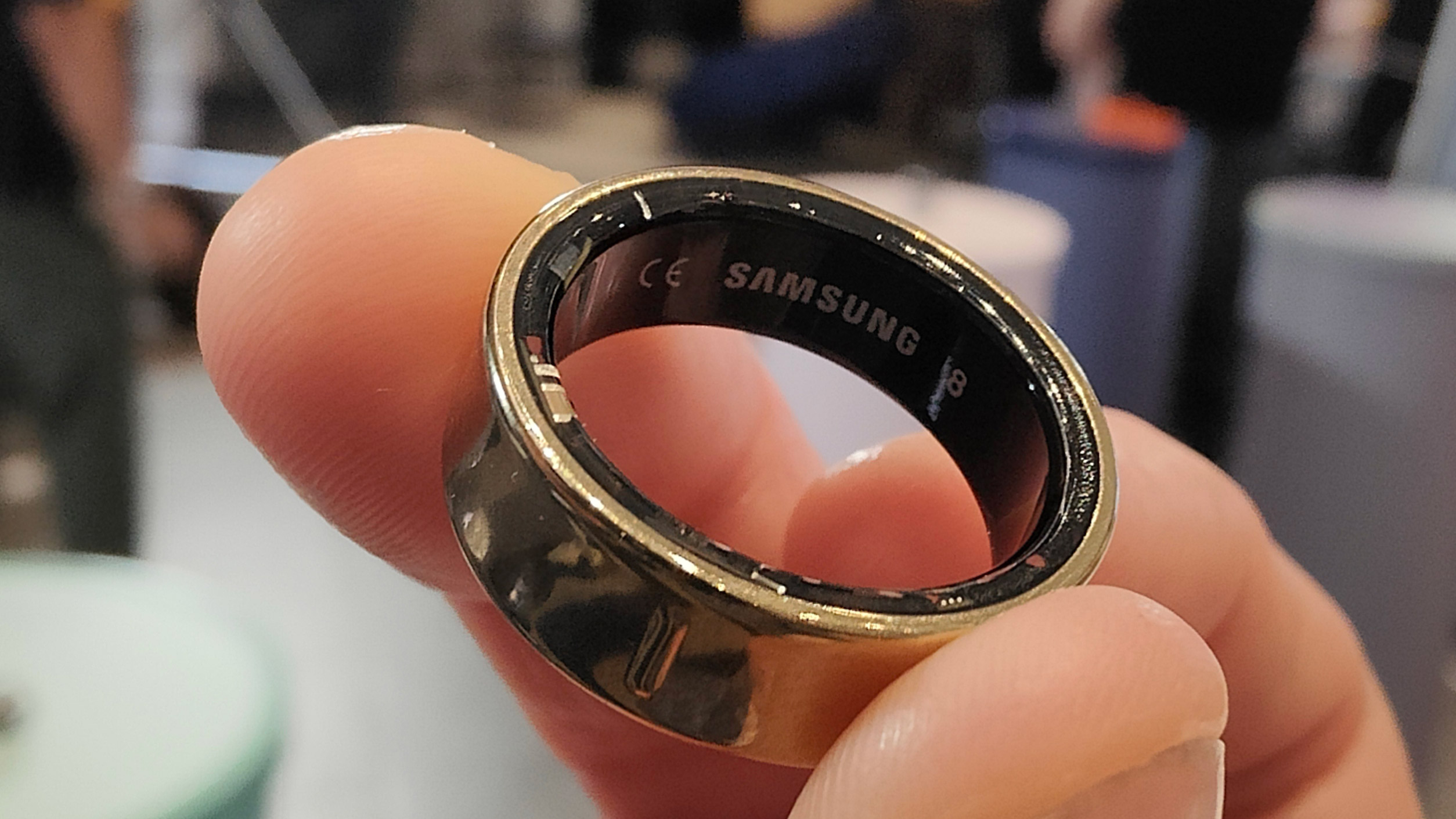TechRadar Verdict
The Samsung Galaxy Ring, is a well-rounded device that integrates wonderfully with the Samsung Health app, using AI and cutting-edge health tools to create a comprehensive “set and forget” wearable experience. Its software doesn’t quite match up to market leader Oura’s right now, as it’s missing a few small features, but its hardware is just as impressive, its design is sleek and it doesn’t need a subscription. It’s a great smart ring, and Samsung Health users (not necessarily Samsung phone users, making this accessible to anyone with an Android phone) will love it – but it’s packing a steep price tag considering it has less functionality than a watch.
Pros
- +
Up to 7-day battery life
- +
Earbuds-style charging case
- +
No subscription fee
Cons
- -
Requires Samsung Health app
- -
High initial cost
Why you can trust TechRadar
Samsung Galaxy Ring: One minute review
Our long journey towards getting hands-on with the final version of the Samsung Galaxy Ring has been filled with rumors, surprise reveals, a few secret meetings, and plenty of pithy Lord of the Rings jokes.
The smart ring is a brand-new format for Samsung, having previously been the province of startups like Oura Health – which makes our current best smart ring, the Oura Ring. Samsung has a lot riding on the Galaxy Ring being a success; based on known patent filings, Google and Apple are watching very closely, and presumably preparing (if they haven’t done so already) to develop prototypes of their own if the smart ring is deemed workable, helpful and – most of all – profitable. A new age of health-focused wearables has begun.
Having finally worn the Samsung Galaxy Ring for over a week, there’s a lot I can now say about the Ring, and I really do love it. Samsung says its wearable is designed to be a “set and forget” experience, with its unobtrusive form factor and long battery life contributing to the idea that you’ll barely need to think about the Ring while you’re wearing it, an idea which holds a lot of water. Speaking of, it’s water-resistant to 100 meters, lasts for almost a week (pushing up to 10 days when you combine it with one of Samsung’s best smartwatches, as they share the fitness-tracking load to extend the Ring’s battery life) and has several characteristics built into its construction that help to make it impressively scratch-resistant.
It’s designed to be a passive wearable; while it does have some fitness applications, its main focus is wellness, which is important to distinguish from fitness. Fitness is workouts. Wellness is a more holistic concept, incorporating an overall approach towards mental and physical wellbeing, recovery, and health.
Sleep is a huge part of this, and sleep is the area that the Samsung Galaxy Ring is really designed to excel in. I think the sleep tracking capabilities are truly excellent, like Samsung's Galaxy Watches without the clunky form factor. I do find myself taking the Ring off during gym sessions (don't want to scratch it on heavy metal bars) and food preparation, at which point it goes back in the charging case. Consequently, it will almost never run out of battery for me, unlike the abysmal battery life of most smartwatches these days. Samsung's first-generation Galaxy Ring is this year's wearable to get, if you can stomach the high price point.
Samsung Galaxy Ring: specifications
| Component | Samsung Galaxy Ring |
| Price | $399 / £399 / around AU$750 (AU prices TBC) |
| Colors | Black, Titanium Gold, Titanium Silver |
| Material | Titanium |
| Weight | 2.3g (size 5) 3.0g (size 13) |
| Battery life | Up to 7 days (ring), up to 6 charges (cradle) |
| Connectivity | Bluetooth 5.4 |
| Sensor array | PPG, accelerometer, skin temperature |
| Water resistance | 10ATM |
| GPS? | No |
Samsung Galaxy Ring: price and availability
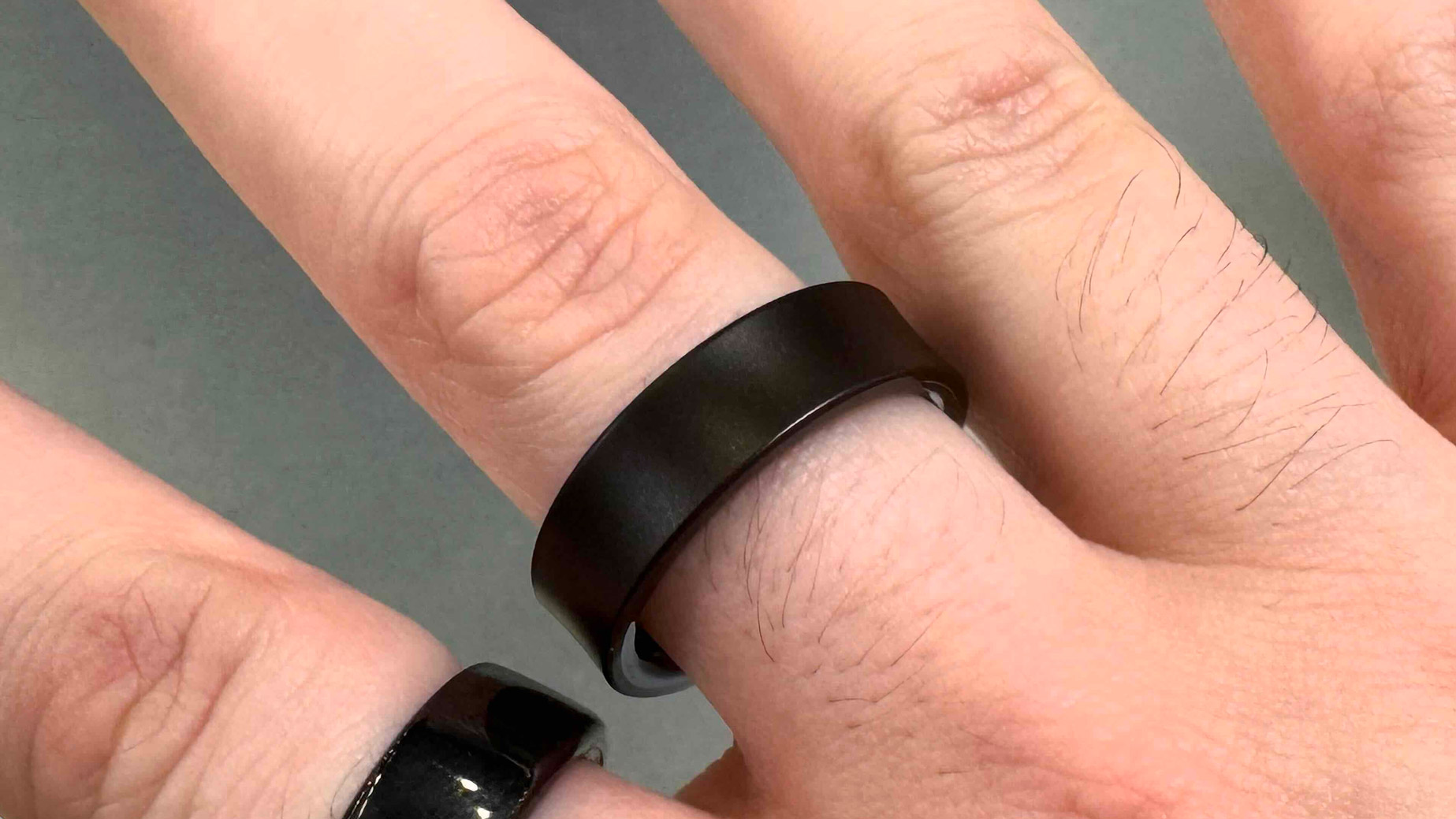
- $399 / £399 / around AU$750
- High initial cost
- No subscription
The Samsung Galaxy Ring costs both more and less than its chief competitor, the Oura Ring Generation 3 – allow me to explain.
Samsung’s model clocks in at $399 / £399 / around AU$750 (AU prices TBC) and will be on shelves from July 24. For that price, you get the Ring, the charging case, and access to a sizing kit before your ring arrives to ensure that you get the perfect fit.
This isn’t too dissimilar to its competitors: while Ringconn, Ultrahuman and Oura devices are cheaper (Ultrahuman Ring Air and Oura Ring Generation 3 both cost around $299 / £329 / AU$599, and Ringconn undercuts them both at $279 / around £220 or AU$420, market leader Oura also recommends that you pay a $5.99 premium subscription fee after the first six months to get the most out of your ring.
So Samsung’s up-front costs are higher, and probably too high at that. However, without a subscription, it works out cheaper than Oura long-term, although not quite as cheap as the Ultrahuman and Ringconn offerings.
One distinct barrier to owning a Samsung Galaxy Ring that it’s important to mention is that it’s designed to work seamlessly with the Samsung Health app, so you’ll need one of the best Samsung phones, or an Android phone running Samsung Health like my Oppo, to make the most of it. iPhone users are out of luck.
- Value score: 3.5/5
Samsung Galaxy Ring: design
- Slim and unobtrusive
- Attractive with a cool case
- Concave to prevent scratches
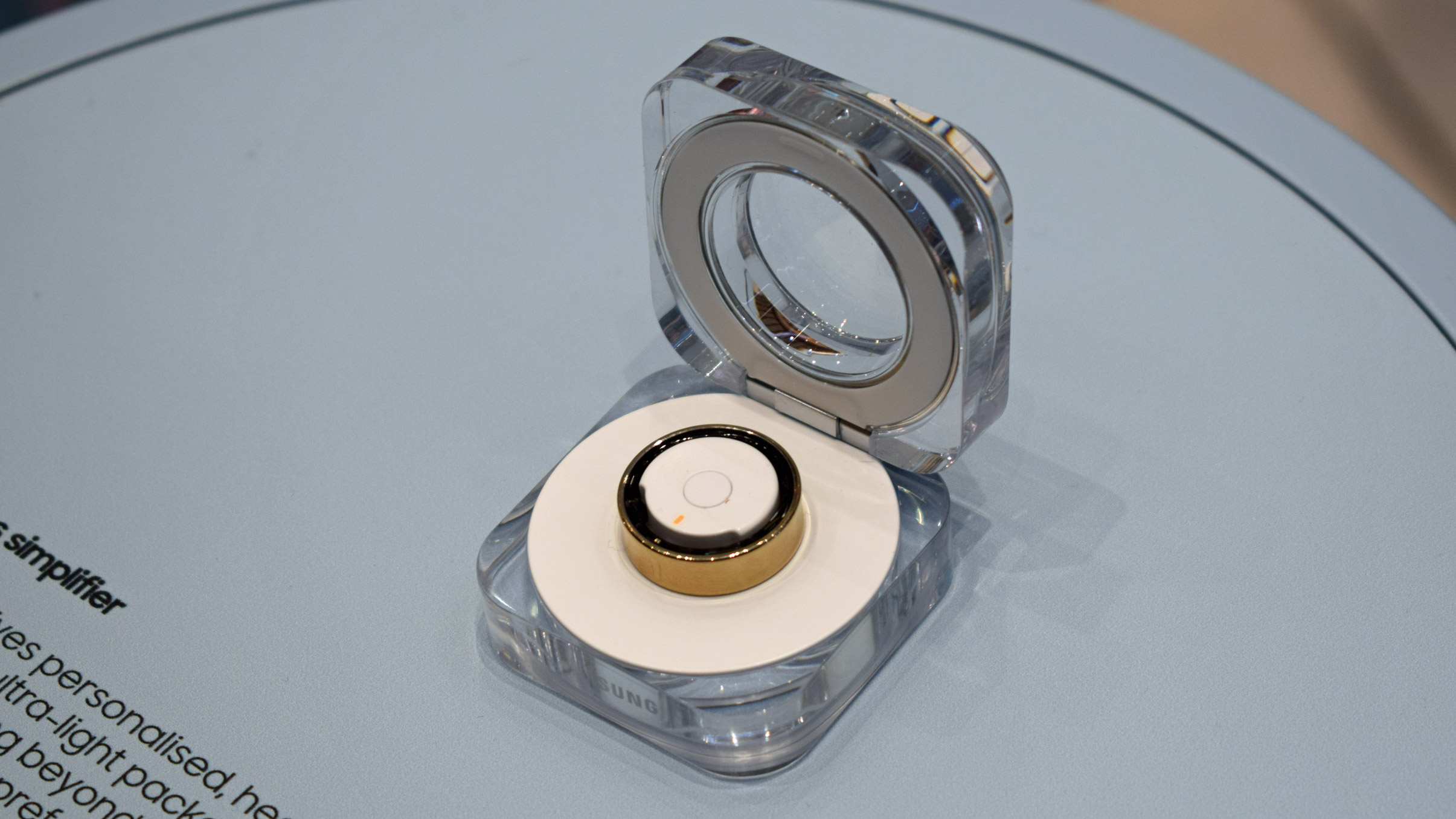
Up until now, I’d only seen and worn a prototype Samsung Galaxy Ring, but the final design is more or less identical to the early models I tried. It was comfortable to wear then, and during my brief tests with the actual ring, that hasn’t changed. It comes in sizes ranging from US sizes 5 to size 13, ranging in weight from 2.3g to 3g, and the exact battery size depends on your ring size: the bigger the ring, the longer it’ll last.
However, the size you wear shouldn’t dramatically affect the performance of the Galaxy Ring; it’ll still keep going for most of the week, passively tracking your health. There’s no display on the ring, which is hardly surprising given its size (although that might not be the case with future versions), so you’ll need to check the Samsung Health app for updates on your ring’s battery life.
You have the option of three colors; Black, Titanium Gold, and Titanium Silver. However, despite their appearance, all are constructed of scratch-resistant titanium. The materials aren’t the only durability feature Samsung has implemented here: the shape of the ring also stops it getting damaged.
If you imagine looking at a section through the ring, most smart rings are either uniformly curved, or concave, so they bulge out slightly relative to the curvature of your finger.
The Samsung Galaxy Ring on the other hand, has a concave shape, a design choice that Samsung has made in order to made to prevent scratches or wear and tear to the surface of the Galaxy Ring, as the protective raised edges function like the bezel of a sports watch. Samsung adopted a similar design with the adventure-focused Samsung Galaxy Watch 5 Pro, which had a raised bezel to reduce the possibility of impact on its screen. Below, you can see an image of the concave Galaxy Ring alongside the convex Oura Ring Generation 3.
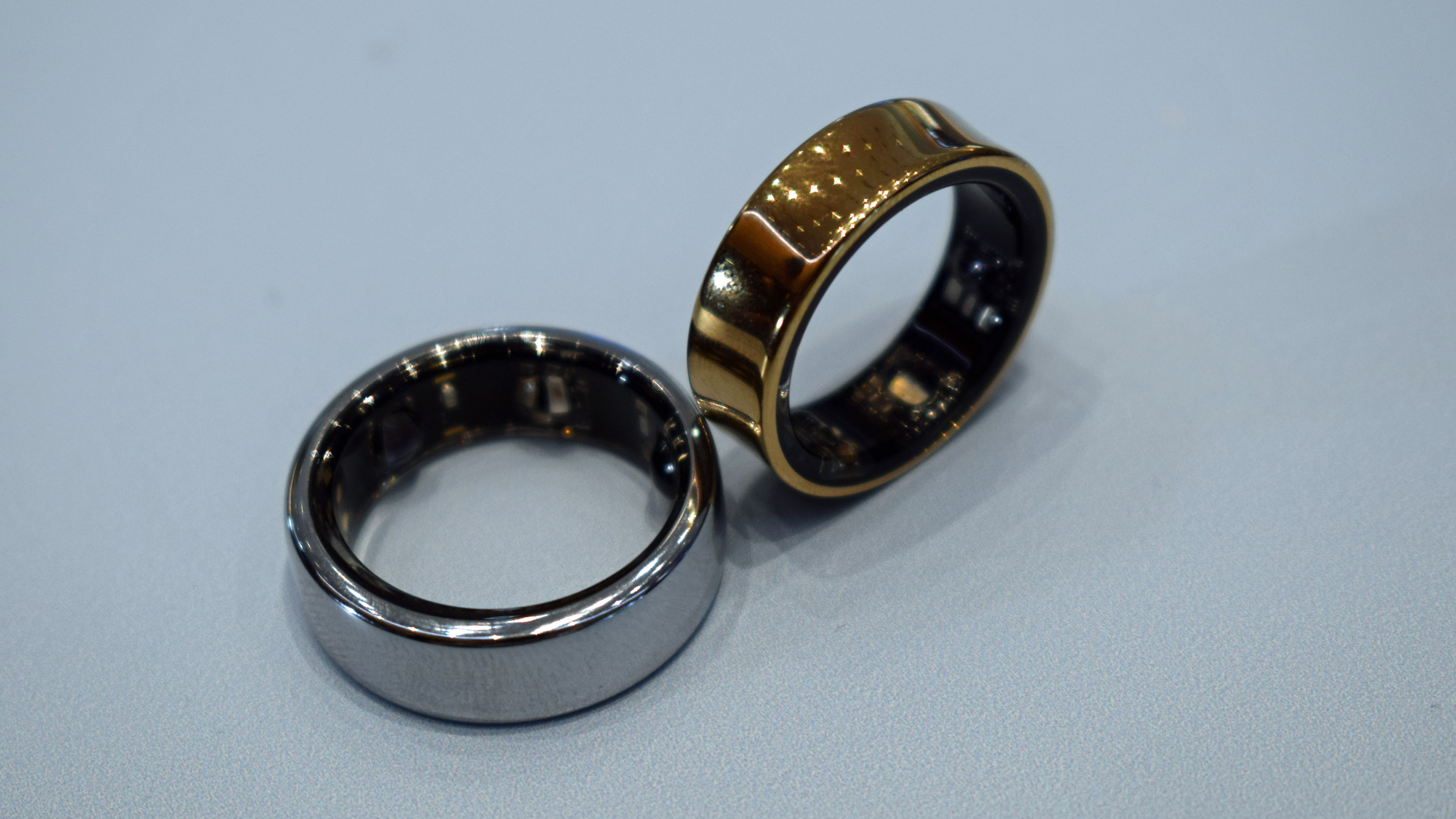
You can see another, top-down image below of the silver Oura Ring and the gold Galaxy Ring, and as you can see it’s tough to tell them apart. Although the outside of the Samsung Galaxy Ring is very different to its rivals, the underside looks almost identical, with three raised nodules to improve skin contact.
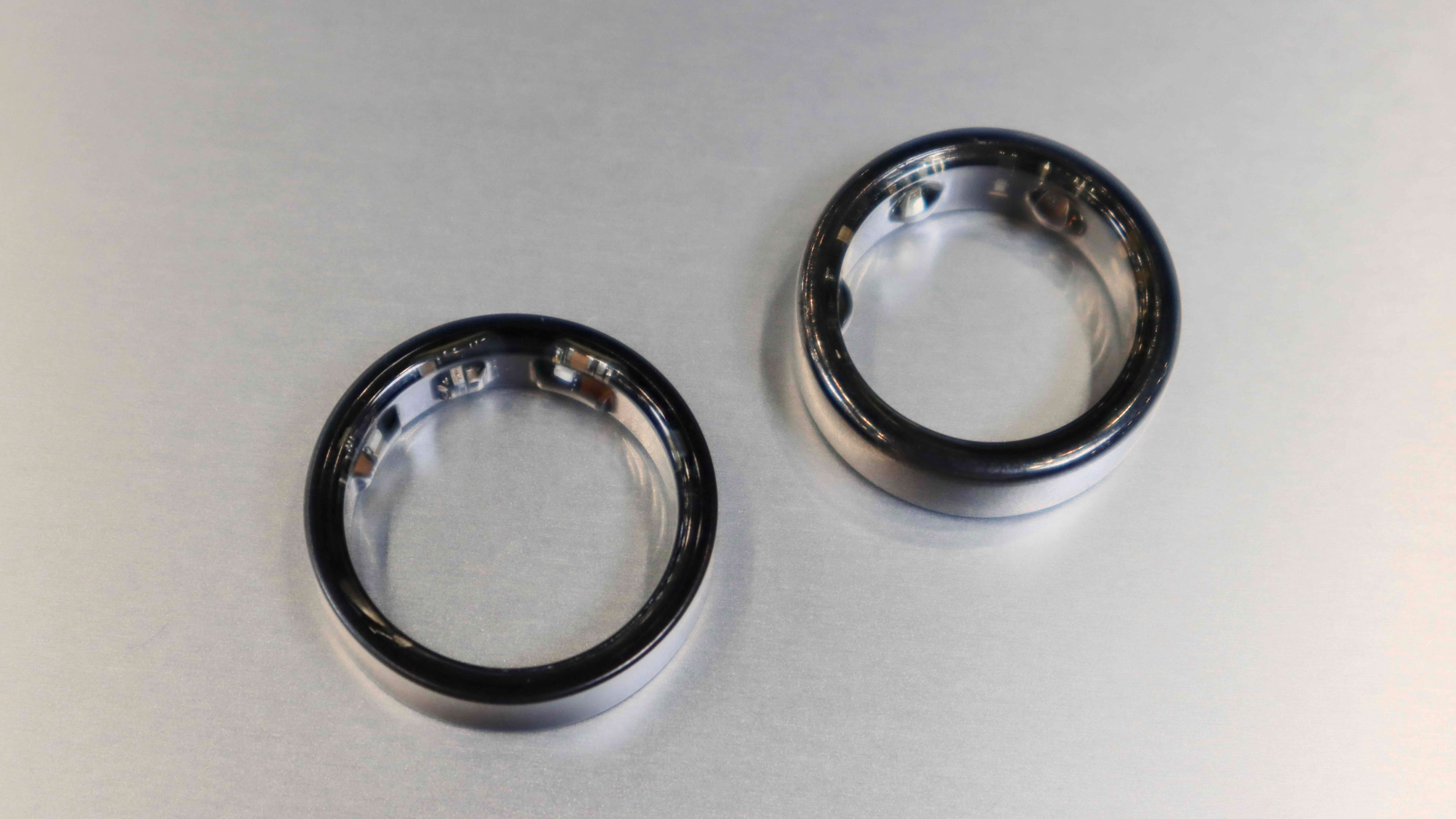
The Galaxy Ring’s charging case is a big improvement on Oura’s. Oura offers a node on which you can place the ring, which plugs into a standard USB-C charger. Samsung has gone one step further and placed the nodule inside an engagement ring-style box, which has its own internal battery, similar to cases for earbuds. The box is transparent, so works with all ring colors, and it can be wirelessly or USB-C charged, and is good for five or six full charges.
When I saw the box I had nightmares of the Ring having to be placed back in the box every 24 hours or so for an additional top-up, but the case is an added convenience, rather than a way to make up for a shortfall in the ring’s battery life.
- Design score: 5/5
Samsung Galaxy Ring: features
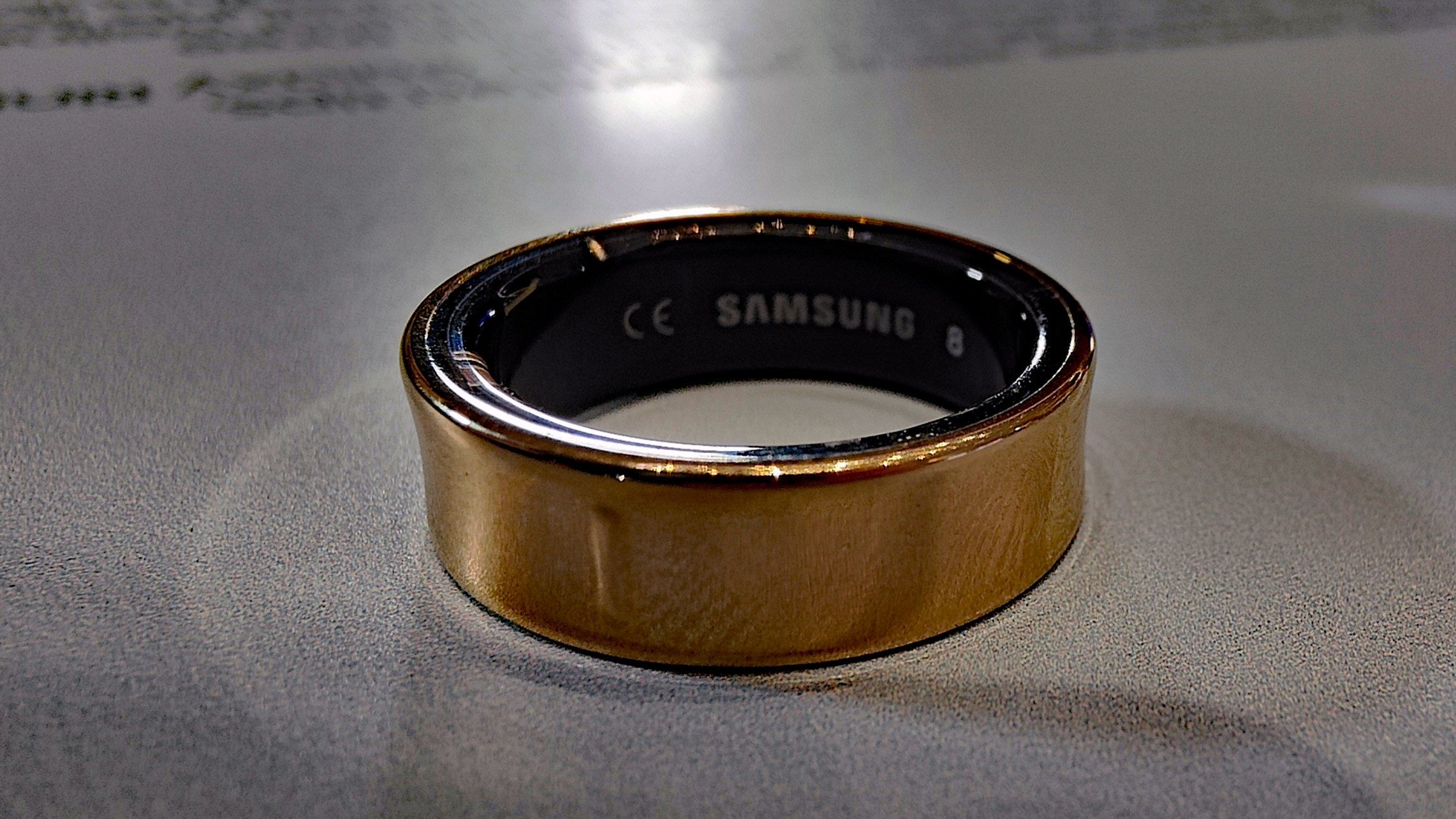
- Lots of sleep metrics and graphs
- Energy and Daily Readiness Scores
- Auto-logs steps, walks and runs
The Ring isn’t stuffed with features in the same way as a Samsung Galaxy Watch might be: with no display, ways of interacting with the device or apps to speak of, it’s designed to be a “set and forget” tracker that passively monitors your health over the course of the week, looking at heart rate, sleep quality, skin temperature, blood oxygen sensing and much more. Galaxy AI allows it to intelligently monitor for unusual heart-rate data and flag inconsistencies.
The Galaxy Ring is designed to be excellent at sleep tracking, just like the Oura, and Samsung has gone all-in here. All the Samsung Galaxy Watch 7’s sleep-guidance features, such as the use of sleep profiles (also known as chronotypes) represented by a cute animal to give you personalized guidance, and using algorithms driven by Galaxy AI to better analyze your sleep health, are all here. I'm a Lion, apparently, which means I sleep very well.
Likewise, your ring will generate an Energy Score for you each morning, based on the quality of your sleep and your general activity levels, which is similar to the best Fitbits’ Daily Readiness Score or Garmin’s Body Battery functionality. Collecting metrics via your Ring or Watch and scoring your wellbeing out of 100, Samsung Health can offer personalized advice, telling you to rest as much as you can, or telling you to get out there and give it your all.
The Galaxy Ring records many of the same metrics as the Watch, and feeds them into the same app – Samsung Health – so the similarities are by design. It might put existing Samsung Galaxy Watch users off buying the Ring initially, but they do work together.
Samsung says using the Ring in conjunction with your watch extends the Ring’s battery life by up to 30% and increases the accuracy of the metrics recorded; however, I suspect only Samsung power users will opt to buy both devices, unless they’re bundled together as part of a cellphone data package.
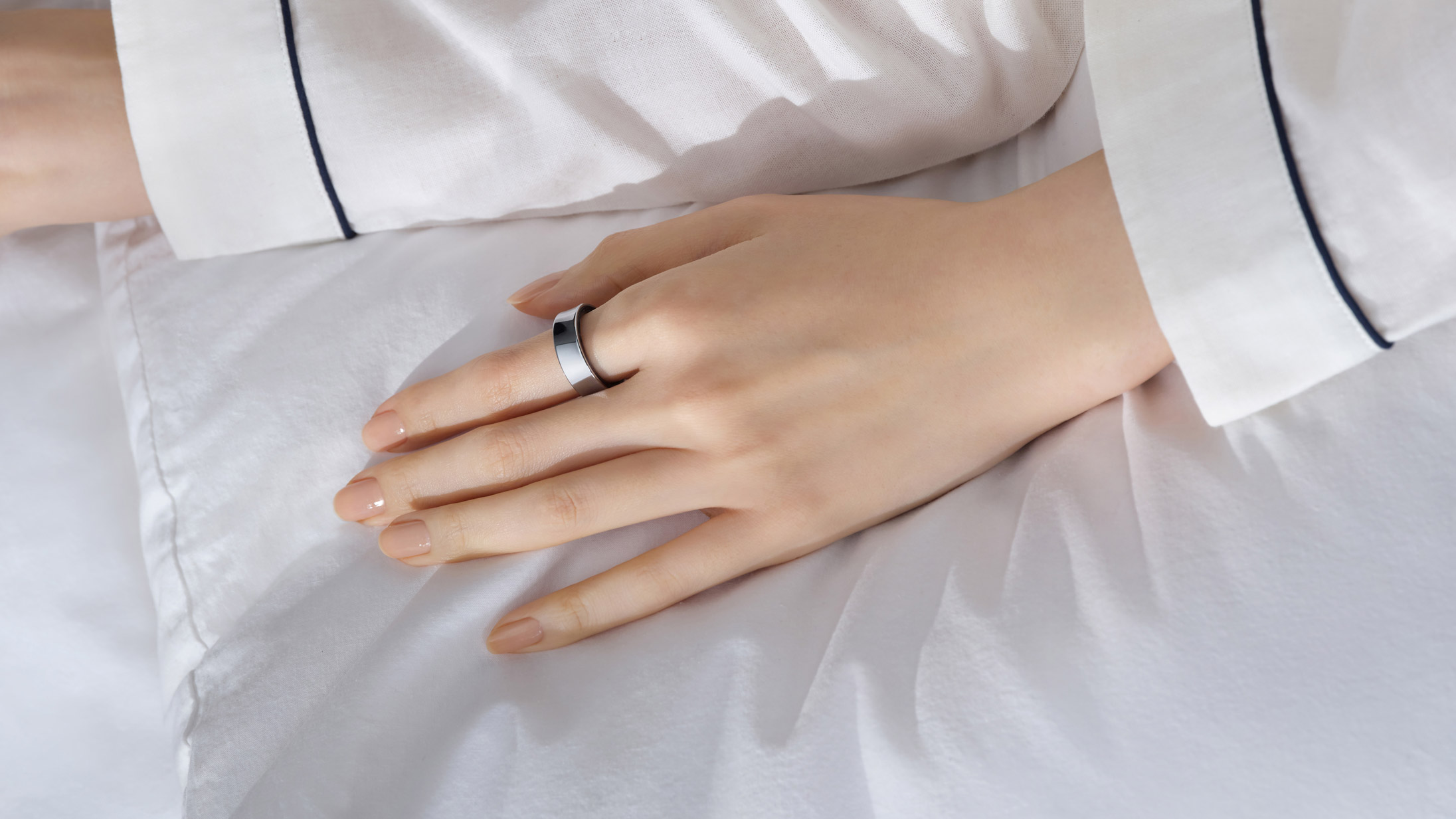
Despite the fact that it’s a passive tracker, the Galaxy Ring does have some fitness applications too. It will automatically track walking and running workouts, logging them in the Samsung Health app so you don’t have to go through the process of retroactively ‘tagging’ workouts in a timeline of your heart rate data to explain any anomalies. However, this only works with walking and running, so any other form of activity using the ring, such as swimming or cycling, will need to be qualified in the Samsung Health app.
Individual insights on steps, exercise, and blood oxygen levels are collected automatically, while food, water and medications can all be inputted manually into Samsung Health to create a more complete picture of your health. Menstrual cycle tracking is a big part of most health-tracking tools these days, especially trackers focused on wellness over fitness, and the Galaxy Ring doesn’t disappoint here either, predicting cycles based on overnight skin temperature.
Outside of health tracking, Samsung’s even squeezed in some more general user applications too – and impressively the Galaxy Ring supports gesture controls. Simply pinch the air to dismiss an alarm on a Samsung Galaxy phone, or control a phone camera’s shutter, using the same pinch gesture to take the picture. Neat stuff, although it does of course require a Galaxy phone to work.
- Features score: 4/5
Samsung Galaxy Ring: Performance
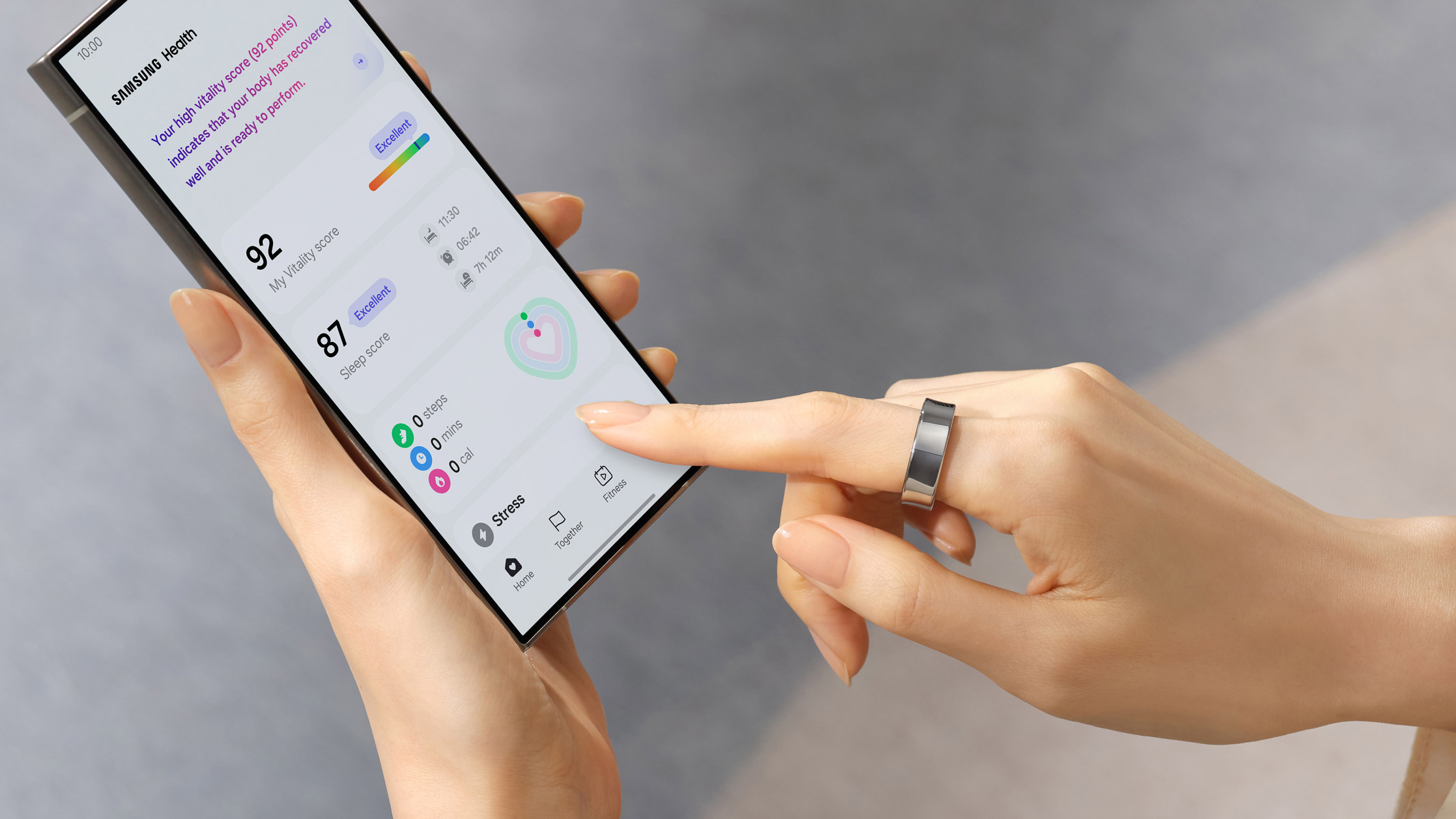
- Battery life performs as described
- Comprehensive sleep metrics
- AI-powered sleep insights
Having worn the Samsung Galaxy Ring for an entire week prior to writing this section, I am very impressed with both the longevity of the little device, and the level of insights the Ring is able to offer. I’ve worn the Ring during sleep, in the shower, during my workday and during strenuous exercise, only taking it off a couple of times during food prep and once to go surfing.
Although the Ring is waterproof, I was a tad concerned such high-speed water-based activities and gripping the hard surfboard might damage it, so left it back in its case - which was the only time I’ve needed to recharge the Ring, and so far its battery hasn’t dropped below 50%. In terms of battery life, it’s a rousing success.
In terms of metrics, the Ring’s step counter and heart rate monitor works nicely even when you wander away from your phone or turn off Bluetooth for a brief period, with the Ring feeding back to your phone once it reconnects. Sleep Score is full of actionable information, offering detailed advice on Physical Recovery, Restfulness, and even Mental Recovery, judged by how much time you spend in REM (the “rapid eye movement” sleep stage, in which you dream).
The Energy Score is also really good, although slightly less useful if you don’t also wear a Galaxy Watch as the Ring doesn’t automatically log structured workouts other than walking or running, which makes sense: there’s no way to interact with it as a device, nor do you have a daily timeline to manually add workout tags like Oura. Still, you could simply not set a goal for structured workouts, and just use the Ring to passively pick up movement and heart rate information - but the intention clearly seems to have the Ring and Watch work together.
You do get fantastic graphs for your sleep information, a meter bar for your heart rate and stress showing how you’re doing compared to your normal ranges, and information on your blood oxygen levels. It’s a very useful, simple, intuitive tool, and I’m very impressed with its performance. Samsung is onto a real winner here.
- Performance score: 4.5/5
Samsung Galaxy Ring: Scorecard
| Category | Comment | Score |
| Value | High initial cost, but no subscription. | 3.5/5 |
| Design | Looks fantastic, sleek and unobtrusive with choice of color and a cool case. | 5/5 |
| Features | "Set and forget" makes it non-interactive, but collects plenty of metrics. | 4/5 |
| Performance | Outstanding battery life, comfortable, and useful information with AI insights. | 4.5/5 |
Samsung Galaxy Ring: Should I buy?
Buy it if...
You are an Android user
To get the full experience with gesture controls, you'll need a Samsung phone, but all the health tracking is done through Samsung Health which can be found on the Play store.
You dislike wearing a watch to bed
Finding it tough to track your sleep? This is your perfect solution.
You have trouble sleeping
Samsung's slim form factor and actionable sleep and wellness insights can accurately monitor sleep stages, offer advice, and supercharge your daily Energy score.
Don't buy it if...
You're an Apple user
Unfortunately, the Ring isn't compatible with iOS.
You're on a budget
That price tag is too steep to recommend for people watching their wallets.
You already have an Oura Ring
The two are very similar, and it would take too long for you to stop paying Oura's subscription in order to make this purchase worth it.
How I tested
I wore the Samsung Galaxy Ring for a week in what I would consider "normal use", sleeping with it each night to make use of its AI insights which require a full week of wear. I exercised with it, compared its steps metrics to the widget on my Oppo Find X5 Pro, and monitored how long the Ring took to return to a full charge.
- First reviewed: July 2024

Matt is TechRadar's expert on all things fitness, wellness and wearable tech.
A former staffer at Men's Health, he holds a Master's Degree in journalism from Cardiff and has written for brands like Runner's World, Women's Health, Men's Fitness, LiveScience and Fit&Well on everything fitness tech, exercise, nutrition and mental wellbeing.
Matt's a keen runner, ex-kickboxer, not averse to the odd yoga flow, and insists everyone should stretch every morning. When he’s not training or writing about health and fitness, he can be found reading doorstop-thick fantasy books with lots of fictional maps in them.
